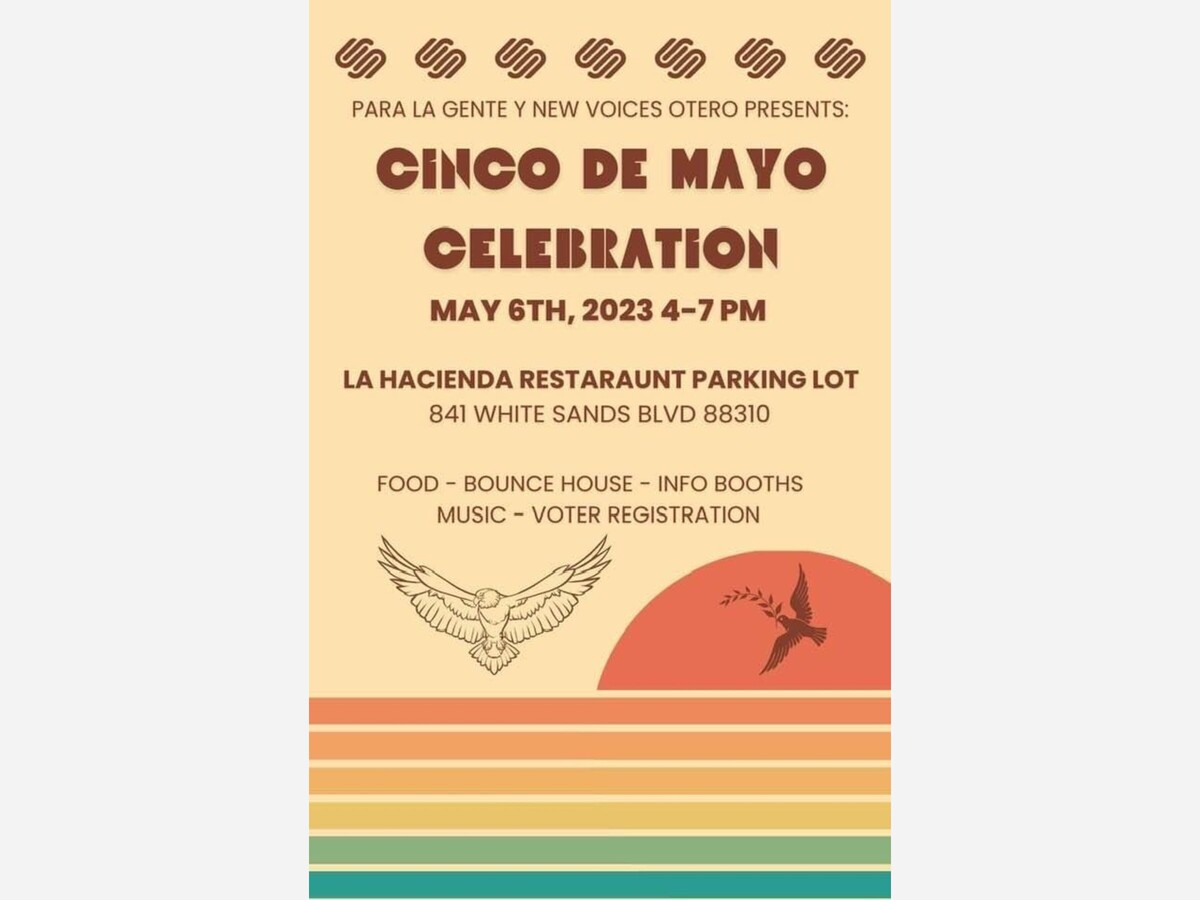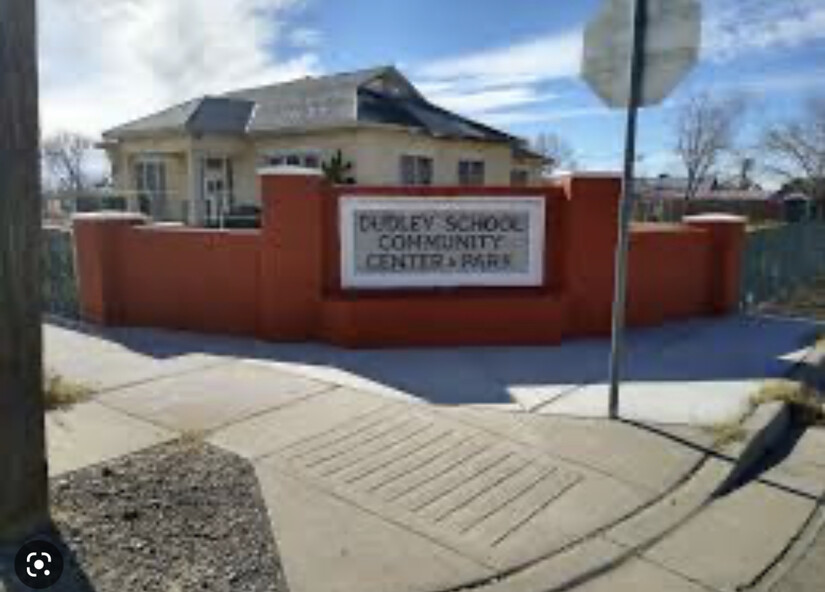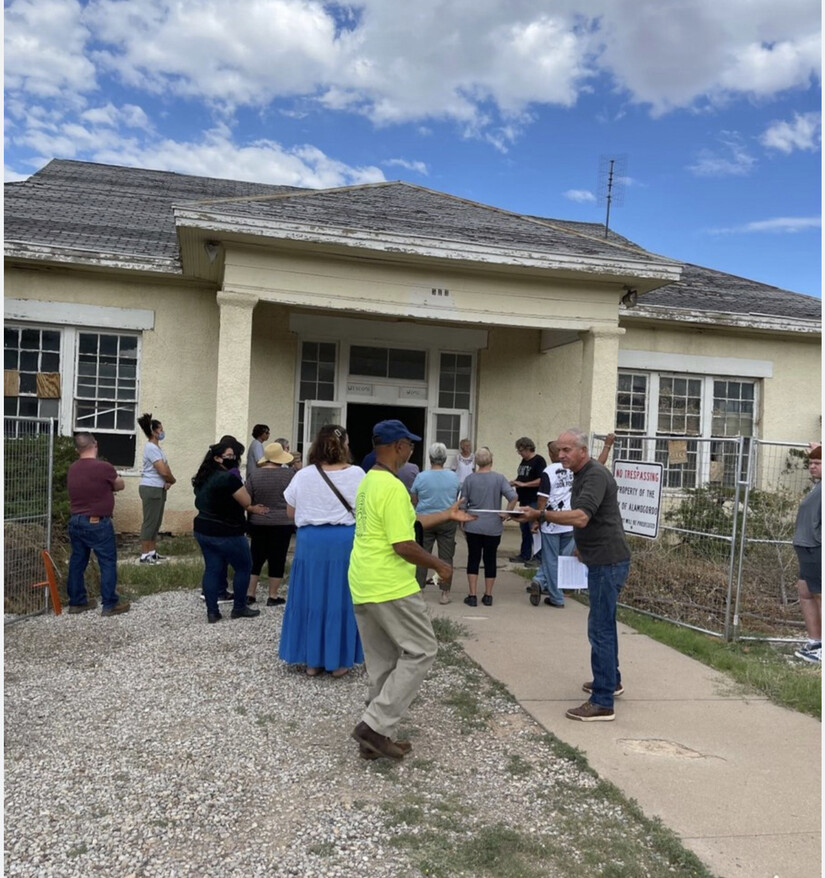Image

Happy Cinco De Mayo 2023. Cinco de Mayo this year is celebrated in Alamogordo in a different way. Friday night New York Avenue is hosting block party with a DJ from New Orleans and a unique twist on just having fun. A city sponsored Cinco De Mayo celebration is at Griggs Field Saturday 10 to 4 pm. The grassroots Community event is Saturday 4 pm to 7 pm at the La Hacienda parking lot.
The authentic celebration of history, art and culture of the Hispanic community within the area known as Chihuahuita is being held at La Hacienda restaurant off of White Sands backing onto the New York Avenue district Saturday 4 pm to 7 pm.
Pastor Martinez and a host of others within the community and ethnically tied to the community are hosting this event.
The event is in the parking lot of La Hacienda with authentic music of the culture, booths, kids events and more. This event is the citizen driven community event celebrating the culture and the neighborhood within the boundaries of the neighborhood.
Why is the neighborhood important? Let’s reviews it history and the pride of the community located within it.
The local Hispanic Community and the spiritual center of the Black Community of Alamogordo was originally housed in Chihuahua, also referred to as Chihuahuita This neighborhood was the historical primary Mexican/Latin American enclave.
Locals living with Chihuahuita refered and many of the residents still do as the barrio of Alamogordo, generations of families carry forward within the neighborhood. Many of the houses continue to age and deteriorate without much effort to revitalize. Alamogordo is like any other border zone community, a colonized space dripping in military culture. Not coincidentally, it was because of the military that many Hispanics continue to reside there. The Dudley School restoration is the first major historical preservation project to occur in the predominantly Hispanic and Black portion of Alamogordo that pays tribute to the neighborhood and its culture.
The Dudley School was built in 1914 and had four classrooms. Dudley School was set up as part of a segregation plan at the time and specialized in children that did not speak English being educated in a separate school facility. Hispanics could not go north of 10th Street or into the plaza at the time. The city of Alamogordo, New Mexico with its proximity to Texas was a racially divided city.

Alamogordo High School began an organized sports program in 1912 for Caucasian boys offering PE, Track & Field and Basketball and Football. The students from Chihuahuita , African American and Hispanic were expempted from joining the APS sponsored sports offering during that time period. The African American School was called the Delaware School or and later Corinth also located in the same neighborhood. The Dudley School is where they spoke Spanish only. In its later years it also served as the segregated school for African American children until 1950. Athletes from those schools were segregated from the white schools of the time.
The preservation of the Dudley school will bring pride back to the community as it is being restored to its historic look. Inside will be story boards of both Hispanic and African American children that attended. Stories will include family recollections, teachers perspectives and historical artifacts of the past. In addition the building will serve as a community center available to lease to the public and a playground. This restoration project is a volunteer community effort and will bring pride to the Hispanic Community due to its telling of history and as the first historic building to be preserved and recognized for its historical significance to the fabric of Alamogordo’s Hispanic and African American community.
 Community volunteers of all creeds help with restoration of the Dudley School a historic building of pride in the neighborhood AlamogordoTownNews.com photo
Community volunteers of all creeds help with restoration of the Dudley School a historic building of pride in the neighborhood AlamogordoTownNews.com photo From its beginning, Alamogordo was a mixture of Hispanics, Native Americans, European Americans, Asians, and African Americans, some of whom were retired Buffalo Soldiers. In 1899, the town boasted three Chinese laundries.
As late as 1947, Alamogordo remained a small town of approximately 3,500 people who depended on ranching, a lumber mill, and a railroad tie factory for their livelihoods. With the reopening of a military base south of town, it began to grow rapidly, including the acceleration of home- building to accommodate the permanent personnel at the base.
In 1954, the population was estimated to be approximately 12,000 persons, of whom about two-thirds were Anglo, some 30 per cent Hispanic, and 3 per cent African American.
During the period between 1940 and 1956 the city increased from a population of 3,950 to 15,145, due largely to the presence of the Holloman Air Development Center, now Holloman Air Force Base.
Alamogordo’s strategic location adjacent to Holloman, and near White Sands Missile Range and Proving Ground, as well as its proximity to White Sands National Monument, Cloudcroft, the Lincoln National Forest, Carlsbad Caverns and other tourist attractions – and the development of new industries -- continue to provide opportunities for visitation and growth.
None of the statistics in the 1956 Master Plan related to African Americans and little about Hispanics or the neighborhoods that were a majority of color.
Curiously, Black residents were not tallied in either the population or employment counts, and indeed were never mentioned in the otherwise comprehensive economic development and land utilization assessment prepared by the Stanford Research Institute of that time.
It is not yet known which of these businesses operating in 1944-45 were owned by Blacks, discriminated against, or employed Blacks:Hillburn’s, Hollomon Brothers, The Fair, Bulk Milk, Sprouse Reitz Company, C. N. Chappell, The Men’s Store, Brunnell’s Department Store, Alamo Steam Laundry, Southwest Lumber Company, Fulton Robinson – Alamo Ice and Coal Company, and the Hendrix – McKinley Motor Company were mentioned in the plan but not in relation to race nor ethnicity.
It is worth noting that the Sprouse-Reitz store advertised in Ebony Magazine and other periodicals catering to a predominantly Black readership. It is not known whether or not Black patrons were allowed to shop at the Alamogordo location.
In the early 1900s there was friction and evidence to suggest that tensions between Anglos and non-White minorities flared frequently. On one occasion in 1902, a man named Henry Pfaff requested that “all the colored people come down from Cloudcroft” and stay in Alamogordo for a week to avoid further inter- racial unrest. What caused the disquietude was not disclosed in the news article.
Chihuahuita join’s Alamogordo….
Designed by Easterners, the original plan lacked the central plaza characteristic of New Mexico’s older Hispano towns.
Alamogordo was laid out with a “preplanned ethnic neighborhood, known as Chihuahuita, between First and Third Streets and Railroad to Texas Avenues.”
Alamogordo was platted in 1898, followed by the Chihuahua addition in 1900.
The town of Chihuahua became a part of Alamogordo when it was incorporated in 1912.
Although the Supreme Court justices ruled unanimously in 1948 that ‘Jim Crow’ real estate agreements “cannot be enforced by any court or police power and need not be observed,” towns such as Alamogordo, Hobbs, Roswell, and others nevertheless kept in place covenants and deed restrictions meant to segregate residential neighborhoods. This segregation applied to Hispanics and Blacks.
The practice was falsely justified and reinforced by a perverse professional code:
“Real estate dealers who subscribe to the Realtor’s Code of Ethics are pledged not to sell or rent property to members of any race or nationality whose presence would be detrimental to property values.”
Written covenants in many of Albuquerque’s subdivisions, for example, overtly prohibited Black and Hispanic residents.
In theory, the Court’s decision dismantled ‘Whites only’ covenants. In practice, however, housing segregation in southeast New Mexico and urban areas including Albuquerque continued well into the 1970s.
One Chihuahuita resident recalled that “the children were all mixed together” in the neighborhood. They associated with one another and played together.
He continues: “We thought blacks went to Corinth because they were supposed to and wanted to; we thought the Mexicans went to Dudley School because they were supposed to and wanted to and Anglo children went where they did for the same reason.”
Prior to Alamogordo’s population surge in the late 1940s and early 1950s, there were equal numbers of Spanish-American and Anglo-American residents. The Spanish-Americans were for the most part laborers who were still very close to their original home in Mexico “in habits and in their social values.”
The Spanish-American children went to a separate school. Researchers Robin Williams and Margaret Ryan documented in 1954 that the “Negroes” came to work on the railroad or in the railroad shops. Hispanics did the manual labor jobs and low wage jobs but acquired land in the neighborhoodZ
Tenth Street, running east to west, marked the dividing line between the Anglo-American and the minority neighborhoods. The Spanish-Americans lived in the southern half, along with a small Negro population, and the Anglo-Americans resided in the northern half. According to Williams and Ryan, this segregation was ‘voluntary’ within each group, “in that the Spanish culture and the culture of the Anglo-Americans had little in common.”
Ruth Coughlin told June Harwell that “Anglos could live south of Tenth if they chose, but Mexicans could not live north of it.”
Early newspaper accounts are replete with references to cultural differences within the Alamogordo population, and the fact that neighborhoods were ethnically segregated:“Victoriano Hernandez one of the Mexicans who is employed on the grading gang out of this town met with rough usage one night this week... True to the Mexican custom he refuses to divulge any of the secrets as to who gave him his wounds or why... It is suspected that there was a little rough house down in that part of town the night before.”
Apparently early in the 20th-century, the neighborhood was referred to as ‘Little Chihuahua City’ or Chihuahuita, referring to the Mexican roots of most of the inhabitants.
Later, as Black arrivals moved in, there are references throughout the 1950s to the “colored section.” Colored at the time was African Americans and dark Hispanics or Mexicans.
One advertisement, for example, referred to a “large house with two baths in nice location of colored section perfect for a Latin or Black family”
The Chihuahuita neighborhood was active and self aware as an example the June 1946, the New Mexico Federation on Colored Women’s Clubs met at their 8th Annual session, also convened at the Corinth Baptist Church in Alamogordo. Highlights of the session included discussions on “race relations.” Officers elected were Mrs. Louise Sampson, Vice-President (Alamogordo) and Mrs. Christopher, Chaplain.
The Women’s Club of Alamogordo did not have a membership roster of Black or Hispanic Women thus an alternative chapter of the New Mexico Federation on Colored Women’s Clubs met in Chihuahuita and allowed membership of any woman of color; Black, Hispanic or mixed race.
Over the years Chihuahuita has been neglected by the city.
If one visits the streets even today one sees the neighborhood is dark and doesn’t have the level of street lighting the other neighborhoods have and there is blight.
However there is a resurgence in process. Community leadership in the way of historical preservation is taking hold. The Dudley School redevelopment is a part of that effort. The Black spiritual leaders have been hosting tours and meetings in collaboration with their Hispanic counterparts and working together on efforts of preserving the history and telling the stories of the neighborhood. The New York Avenue Ghost and History Tour hosted by Roadrunner Emporium includes stories of Chihuahuita in Alamogordo’s early days and what life was like on that side of 10th Street. That tour has hosted over 400 visitors from around the state. Music videos are now being produced again telling the story and originating in the neighborhood thus awareness of its significance and its potential will never be lost.
https://www.facebook.com/100045765765814/posts/pfbid0fYtrqFeoQUPJD1zYtX…
This Cinco De Mayo celebration let’s party with pride but let’s also remember and cherish the neighborhood that is the center of this proud, beautiful and hardworking Hispanic and Latin community.